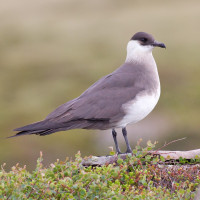Beschreibung
The Neslandavík Bay is located on the northern side of Lake Mývatn and is probably the best spot to find great numbers of waterbirds of the entire lake. Large flocks of resting Reiherente, Pfeifente and Bergente. Other species of waterbird that can be found within the bay are Schnatterente, Sterntaucher, Ohrentaucher, Odinshühnchen, Spießente and Eisente. The area is also a good spot for Trauerente. The bay is known for its rare vagrants and species such as Kanadapfeifente, Tafelente and Ringschnabelente have been seen here.
The bay is also a good spot for observing gulls and skuas, like Mantelmöwe, Skua and Schmarotzerraubmöwe.
The best way to observe the bay is from Sigurgeir's Bird Museum, located just east of the bay. It gives the best views over the lake. The museum is surrounded by low vegetated fields and a great place to observe species like Steinschmätzer and Wiesenpieper. Also Sumpfohreule can be found here and Gerfalke can be seen hunting.
Details
Zugang
The area is best observed from the Sigurgeir's Bird Museum, located just east of the bay. A road leads from the ringroad in the north towards this museum. You can observe the lake from here. You can also follow the ringroad towards west and scan the area from off the road.




